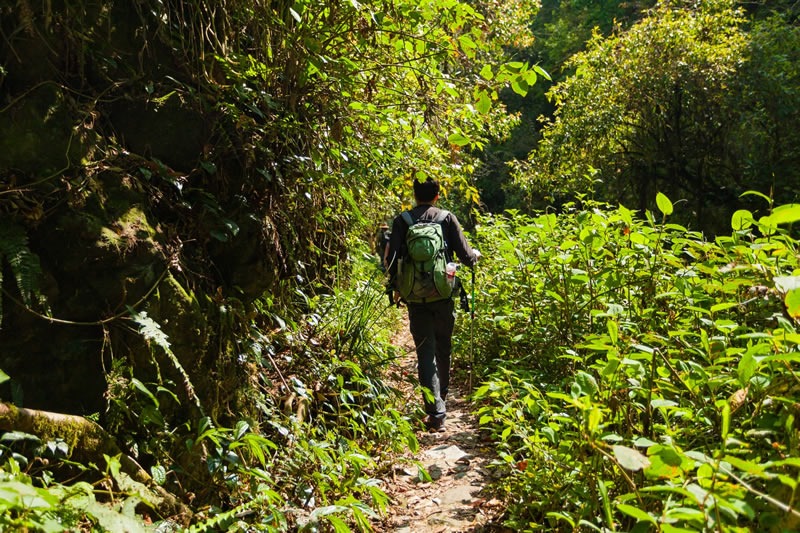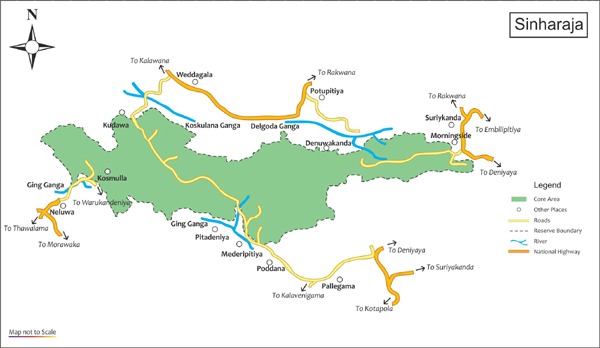Here are the 16 trails for Sinharaja forest tours:
1 – Trail from Kudawa Conservation Centre-1 – Wathurawa-Mulawella
2 – Jeep trail from Kudawa Conservation Centre to Kudawa Research Station – Wathurawa-Mulawella
3 – Mulawella Peak – From Kudawa Conservation Centre to Nawanda Tree – From Sinhagala Trail to Gal Len Yaya
4 – Kudawa Research Station-Sinhagala trail from Kudawa
5 – Gal Yen Yaya rail
6 – Trail to Sinhagala Peak
7 – Pitadeniya Conservation Centre
8 – Pitadeniya Ticket Counter
9 – Trail from Mediripitiya to Pitadeniya Conservation Centre
10 – Kohila Aramba-Kohila Aamba Trail
11 – Kekuna Ella-Kekuna Ella and Pata-oua Ella Trail
12 – Patan-Oya Ella-Sinhagala Trail from Pitadeniya
13 – Duwili Ella (Kosmulla)-Duwili Ella Trail from Denuwakanda
14 – Morningside Conservation Centre-Duwili Ella Trail from MCC
15 – Natural Pool – From Morningside to the natural pool
16 – Duwili Ella (Morningside)-Trail from Kosmulla via Duwili Ella to Siththara gal Lena (cave)
Experience the untamed wilderness on a misty morning with Sinharaja Forest tours. The sinharaja forest tour is a perfect opportunity to encounter many tropical trees, plants, insects, and many other creatures. On the Sinharaja jungle tour, you will see a large number of birds, monkeys, lizards, spiders, butterflies, snakes, and many more. The jungle tour is easy and suitable for anyone with moderate physical fitness. Venturing on a Sinharaja forest tour is the best way to explore an invaluable treasure trove of Sri Lanka. Sinharaja rain forest is a strict nature reserve due to its ecological importance and Sinharaja is also protected under the emblem of the UNESCO world heritage site. This blog post is mainly about the 18 trails that can be used for a Sinharaja rainforest tour and other essential information that you need to know before starting your Sinharaja forest packages.
Table of Contents
- Here are the 16 trails for Sinharaja forest tours:
- Sinharaja forest tours
- History of sinharaja rainforest
- IUCN World Heritage Conservation Outlook Assessment 2020 on Sinharaja forest
- Why choose Sinharaja for the rainforest tour in Sri Lanka?
- Sinharaja rainforest tours from Colombo
- Sinharaja forest tours from the beach resort
- Trails for Sinharaja forest tours
- Sinharaja rainforest tour packages
- Historical and ecological importance of Sinharaja
- Sinharaja rainforest package in a nutshell
- How can I organise a Sinharaja forest package?
- When is the best time for the Sinharaja forest tour?
- Weather pattern in Sinharaja rainforest
- Sinharaja rain forest tour from Colombo
- What time should I start my Sinharaja forest tour?
- Why use the Weddagala entrance?
- Location of Sinharaja rainforest
- Importance of Sinharaja rainforest
- The extent of the Sinharaja rainforest
- Bio-diversity of Sinharaja rainforest
- Sinharaja forest packages and bird watching
- Sinharaja forest packages the best way to see Butterflies
- What are the most common animal species to see on the Sinharaja forest tour?
- Sinharaja forest entrance points
- 6. The most popular starting point of the Sinharaja rainforest tours
- What time should I start my tour in the Sinharaja rainforest?
- How much is the entrance fee for the Sinharaja rainforest?
- How to find guides for tours of the Sinharaja forest reserve?
- How to find accommodation for Sinharaja forest tours?
- Southern Sinharaja forest tour
- WHAT ARE THE 16 POPULAR TRAILS FOR SINHARAJA FOREST PACKAGES?
Sinharaja forest tours
Venturing on a Sinharaja forest tour is the best way to explore this invaluable treasure trove. The Sinharaja rainforest is a strict nature reserve due to its ecological importance, and it is also protected under the emblem of the UNESCO World Heritage Site. This blog post is mainly about the 18 trails that can be used for a Sinharaja rainforest tour and other essential information that you need to know before starting your Sinharaja forest packages.
The visitors can witness thick green vegetation all around and gloomy surroundings, as the sun’s rays find it very difficult to penetrate the upper canopy of the forest. The travellers could see all shades of green colours around them, hear the torrential creek sound coming from crickets (Grylloidea; Laicharting), and hear the soothing music of birds from time to time from the jungle while waterfalls nearby make the constant roaring sound as they bring the waters down the cliff. Don’t be surprised if you encounter a troop of monkeys suddenly appearing in the upper canopy while making a loud noise to tell you that it was their home for many millennia.
History of sinharaja rainforest
Until today, destructive human activities have spared Sinharaja, which was once part of the Gondwana land. Sinharaja is one of the top 10 biodiversity hotspots in the world. Sinharaja has been one of the 7 UNESCO world heritage sites on the island since 1988.
According to the legends, it was the abode of a Lion (abode by a Sinha); thus, it came to be known as Sinharaja. The first historical note on Sinharaja was written by one of the oldest explorers in the world, “Ibn Battuta” (1304 AD-1369 AD), who came across the Sinharaja forest as he walked on a footpath as he was making his way to the sacred mountain “Sripada” or Adams peak.
Bushes, plants, vines, and rugged terrain make it nearly impossible to go off track, and it can be dangerous too, according to Sarath, who takes us around the forest and shares his insight about this valuable natural asset in Sri Lanka. Sinharaja spreads over 8864 hectares (21903 acres).
IUCN World Heritage Conservation Outlook Assessment 2020 on Sinharaja forest
The “IUCN World Heritage Conservation Outlook Assessment,” which was released on December 9, 2020, suggests the immediate attention of the relative parties and additional conservation efforts to maintain and restore values over the medium- to long-term. The report indicates that the forest’s ecological value has significantly declined over the past several centuries. Therefore, the Sinharaja rainforest has been categorised under the “significant concern” group of natural vegetation that is facing numerous obstacles; invariably, the conservation of forest values is threatened and is showing signs of deterioration.
However, according to the report, the Sinharaja rainforest is still an important ecological asset for the people of Sri Lanka, which has an irreplaceable ecosystem and provides habitats critical to the survival of globally threatened species. More information on the report.
Why choose Sinharaja for the rainforest tour in Sri Lanka?
If you are searching for a place to do a rainforest tour in Sri Lanka, there is no better place than the Sinharaja rainforest. Not only is the Sinharaja rainforest the largest on the island, but it has also undergone significant development to offer essential services to its visitors. For example, the wildlife department has set up offices at the rainforest’s main entrances and provides well-trained guides to lead visitors to interesting places. The tourist can find accommodation very close to the rainforest if required and the accommodations available range from cheap dormitories to luxury villas.
Sinharaja rainforest tours from Colombo
Travellers can book the Sinharaja rainforest tour in Colombo. Usually, this one-day tour starts at around 06:30 AM. The tour includes a 4-hour guided rainforest trek with one of our experienced nature guides and arrival/departure transfers from Colombo.
Sinharaja forest tours from the beach resort
You can book Sinharaja rainforest tours from Colombo and more than 400 beach resorts on the west coast. As for the Sinharaja rainforest tour from Colombo, this one-day tour also starts early at around 06.30 AM. This one-day tour includes all ground transportation and entrance tickets as well as a guided rainforest trek with one of our experienced nature guides.
Trails for Sinharaja forest tours
Travellers do not need to travel far from the western and southern coast beach resorts to find an entirely different landscape and some exciting trekking and bird-watching treks like Sinharaja. Sinharaja is one of the best places for trekking and offers dozens of trekking routes with different trekking conditions. Therefore, the Sinharaja rainforest tour is very popular among travellers.
The Sinharaja rainforest is warm and subjected to heavy rain very often, but it offers great walks in a magical rainforest mixed with isolated mountains, waterfalls, rivers, streams, and a fascinating collection of fauna and flora. Hundreds of avian fauna species, many of which are endemic to Sri Lanka, coexist in the evergreen rainforest of Sinharaja. The terrain of Sinharaja may make for gentler trekking, but it still offers some challenges and plenty of rewards.
Sinharaja rainforest tour packages
Lush stands of trees, plants and creepers, while rocks shining with moss evoke a sense of a kingdom hidden from the outside world. Sinharaja is one of the last remaining primaeval rainforests in the world and a trip to Sinharaja is the best way to pamper yourself in the lap of mother nature.
A Unesco World Heritage Site and one of the world’s important biodiversity hotspots, the Sinharaja rainforest is among the planet’s richest rainforests, supporting a plethora of endemic flora and fauna. Stretching over 1800 hectares and sandwiched between the western and Sabargamuwa provinces, Sinharaja is home to elephants, leopards, the elusive black panther, and Sri Lanka’s largest population of avian fauna species. But these are just some of the reserve’s more well-known treasures. A more fascinating phenomenon was in store for you as you ventured on the Sinharaja rainforest tour.
Historical and ecological importance of Sinharaja
The Sinharaja Forest Reserve is a valuable patch of forest on the island, and it is the last remaining primaeval rainforest in Sri Lanka. It is believed to have originated about 180 million years ago, during the Gondwana Supercontinent. Participating in one of the Sinharaja rainforest tours is the best way to explore this invaluable treasure trove. The UNESCO world heritage site protects Sinharaja due to its ecological importance. This article contains a lot of information that can be useful to plan your next Sinharaja forest packages.
Sinharaja rainforest package in a nutshell
- 07.00 AM Leave Colombo
- 10.00 AM reach Weddagala entrance and starts the trek
- 02.00 PM Finish the rainforest trek and start the return journey
- 05.00 PM reach the hotel in Colombo
How can I organise a Sinharaja forest package?
The Sinharaja rain forest tour is one of the most exciting activities a tourist can undertake during their Sri Lanka holiday. According to our experience, most tourists who visit the Sinharaja rainforest plan their Sinharaja forest packages in advance. Some other travellers visit Sinharaja rain forest on a day trip from their beach resort or from Colombo, which is mostly spontaneously arranged with the help of local tour operators. However, the Sinharaja rainforest tour is a wonderful opportunity to see the rich biodiversity of one of the oldest rainforests in the world.
When is the best time for the Sinharaja forest tour?
The annual rainfall in the Sinharaja forest exceeds 5000 ml. The rainy season at Sinharaja starts in April and ends in November, which is the main rainy season in the forest. Despite the leeches, slippery slopes and relentless rain, the rainy season is considered a time of year to visit the forest. During this period, the waterfalls bloom like flowers, creating spectacular scenery with their roar. This season is the perfect time of year to witness the unparalleled beauty of Sinharaja. The incessant downpour brings the fertile and rocky landscape to life in a vivid shade of green; fresh grass covered nearly every inch.
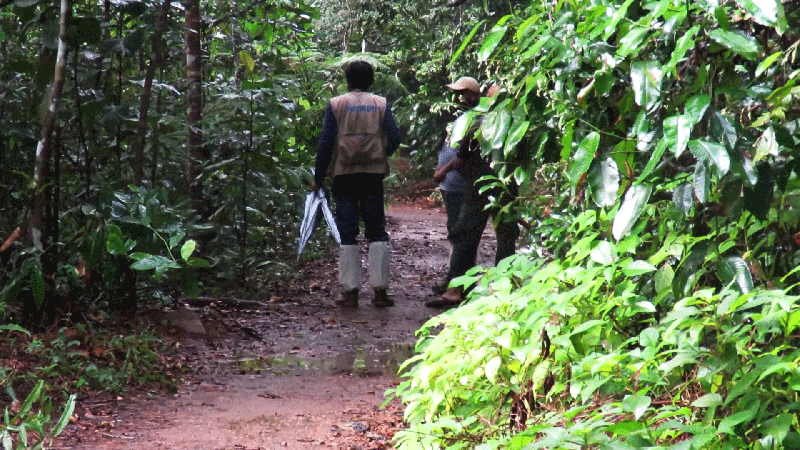
Weather pattern in Sinharaja rainforest
Temperature
The maximum temperature recorded during the five seasons (January-April, May, June-August, September, and October-December) was 28.9°C in May, and the second-highest during the January-April period (28.2°C).
The rainforest experiences mean annual minimum and maximum temperatures of 22 and 28°C, respectively. The months with the highest recorded temperatures are April (25.3°C), May (24.9°C), and January (25.1°C), while December (23.8°C) has the lowest.
Variations in annual rainfall
The average yearly rainfall at Sinharaja is about 5,016 + 632 mm. The annual rainfall reported over the last few years was 5,023 + 457 mm, 5,003 + 319 mm, and 4,997 + 234 mm on a two-, three-, and five-year shifting average.
Sinharaja rain forest tour from Colombo
This Sinharaja rainforest tour starts from Colombo; however, travellers can book this tour from many other places, such as Colombo international airport, Colombo hotels, and 40+ beach hotels on the west coast. Most Sinharaja forest packages are private tours, which means that you have maximum privacy while exploring the rainforest at your pace.
The Sinharaja rain forest tour starts at 07.00 am from Colombo and the drive from Colombo to Sinharaja rain forest takes around 3 hours. The guests are starting the rainforest trek at the Weddagala main entrance, which lasts around 4 hours.
The guests who like to start the Sinharaja forest packages from any city apart from Colombo, please write to us at admin@seerendipitytours. The pickup time and the price of the Sinharaja forest packages slightly differ, depending on the starting place.
What time should I start my Sinharaja forest tour?
The tour is a private activity and therefore the starting time is very flexible. However, we recommend the participants start the trip around 7 a.m., and therefore, they can visit the national park before midday. However, if you are a bird lover and love to see birds, we recommend you to start the jungle early in the morning.
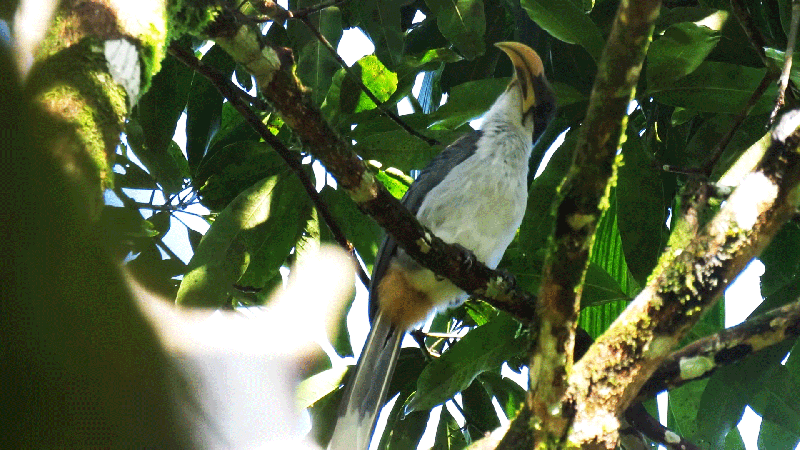
Why use the Weddagala entrance?
According to our nature experts, the Sinharaja rainforest trip starting from Weddagala is far more captivating than the Sinharaja tours starting from the Pitadeniya entrance. After analysing the feedback received from the travellers who took the Sinharaja trip, we also came to know that using the Weddagala Sinharaja entrance is more suitable for the Sinharaja Rain Forest tours.
If you need to see many birds and other fauna, it is highly recommended that you start the Sinharaja tour at the Weddagala entrance. However, you will not be able to see waterfalls when you start the rainforest trek from the Weddagala entrance. The Weddagala ticket counter is the most popular place to start the Sinharaja rainforest trek and 90% of travellers start their march At Weddagala.
The Pitadeniya Sinharaja entrance is popular among travellers coming from south coast beach resorts; it is the entrance closest to them. Pitadeniya Sinharaja entrance, also known as the Sinharaja southern entrance, allows you to see 5 spectacular waterfalls. Unlike the trek that starts from the Weddagala entrance, you are unable to see a large number of bird species on this trek.
Location of Sinharaja rainforest
The ecosystem of the Sinharaja forest reserve, nestled between Sabaragamuwa and the Western province of southwest Sri Lanka, is best described as a low-altitude and semi-montane evergreen rain forest. The distance to the Kudawa entrance gate of Sinharaja from Colombo is 128 kilometres via the southern motorway, and it takes around 3 hours to reach Sinharaja from Colombo. The distance to the Mediripitiya entrance gate of Sinharaja from Colombo is 142 kilometres and it will take around 3 hours and 30 minutes for the journey.
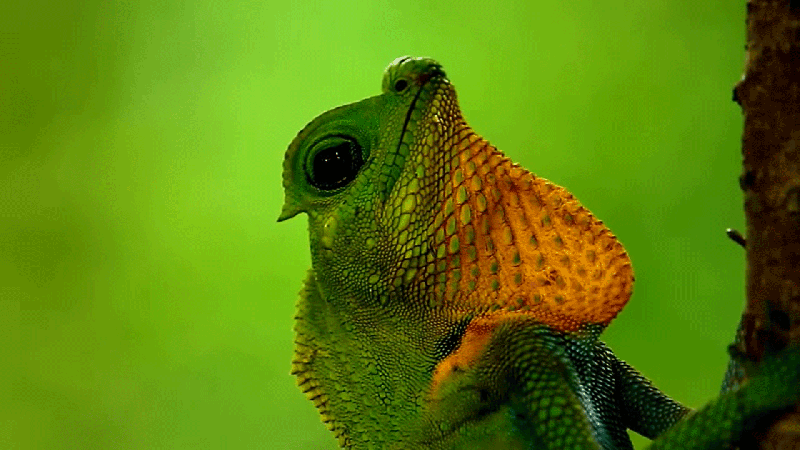
Importance of Sinharaja rainforest
The Sinharaja rain forest spreads over varied geographical conditions such as mountains, grasslands, valleys, etc. Sinharaja forest has a unique ecosystem, and the rainforest has the highest density of faunal and floral species compared to all other rainforests in the country. The Sinharaja forest is home to an unparalleled variety of fauna and flora.
Their uniqueness and importance are highly adorned by ecologists. More than 60% of the trees and plants in the Sinharaja forest are endemic to Sri Lanka, many of which are rare and unique to this forest. A large number of fauna species are also endemic to the Sinharaja forest. There are many reptiles, amphibians, insects, bird species, butterfly species and mammals in this collection. Due to its high concentration of fauna and Flora, Sinharaja is the most valuable rainforest on the island and is included in many road trips to Sri Lanka.
The extent of the Sinharaja rainforest
The Sinharaja Forest Reserve spreads well over 8000 hectares and fluctuates between 300 and 1170 meters above sea level. The forest is demarcated into 2 sections: 6092 hectares under the Forest Reserve and 2772 hectares under the Proposed Forest patch.
A large network of perennial waterways (rivers, waterfalls and streams) crisscrosses the ridges and valleys of Sinharaja forest. Sinharaja forest is acting as an important catchment area on the island and records very high rainfall throughout the year. The main tributaries of the Kalu river and Gin river start in the Sinharaja forest reserve.
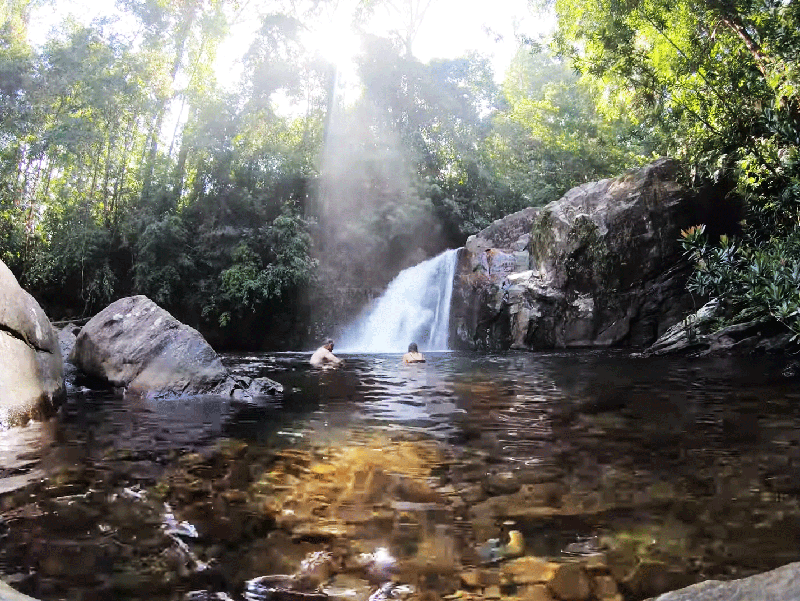
Bio-diversity of Sinharaja rainforest
The tour of the Sinharaja rainforest gives you a valuable opportunity to see some of the very rare species of flora of Sri Lanka, such as carnivorous plants, because, out of 217 species of endemic trees and woody climbers found in Sri Lanka’s lowland, 139 species (64%) have been discovered in the Sinharaja forest reserve. We describe 16 species of these trees and plants as extremely rare. The number of endemic trees and plants on the island is 830.
The tour of the Sinharaja forest reserve is another great opportunity to explore the rich wildlife of the island. However, you encounter a wide variety of creatures that are not found in other parts of the island. During a tour of the Sinharaja forest reserve, travellers encounter many different species of birds, butterflies, amphibians, insects, and reptiles, unlike in most other national parks in Sri Lanka, such as Yala National Park, Udawalawe, and Minneriya. The chances of spotting leopards, elephants, and bears are extremely rare.
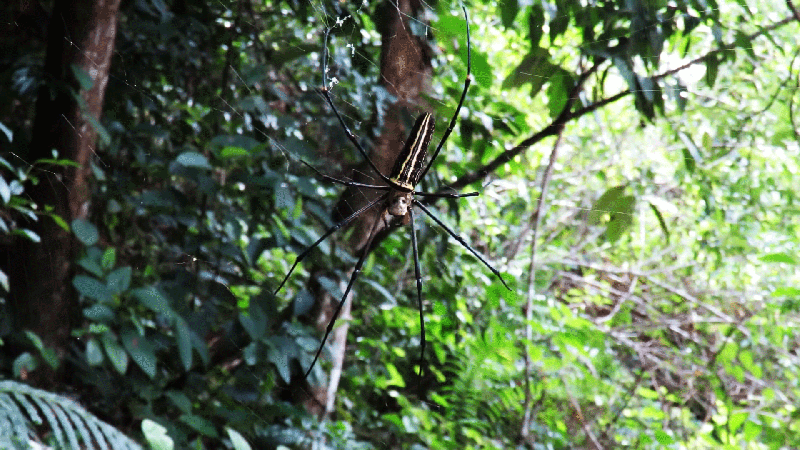
Sinharaja forest packages and bird watching
Tours of the Sinharaja forest reserve are included in most bird-watching tours of Sri Lanka, and it is one of the very essential parts of every bird-watching tour in Sri Lanka because bird watchers can spot a large number of avian fauna species in the forest. 19 of 25 endemic bird species have made Sinharaja their home; therefore, taking a tour of the Sinharaja forest reserve is the best way to encounter Sri Lanka’s endemic bird species. Most of these species are occurring very rarely outside of Sinharaja; therefore, taking tours of the Sinharaja forest reserve is the best way to see those endemic bird species.
Sinharaja forest packages the best way to see Butterflies
Tours of the Sinharaja forest reserve also enable the visitors to see a large number of butterfly species on the island. Most butterflies in the country are listed on the red list of the IUCN; habitat loss has been identified as the main reason for the slowly diminishing butterfly population. During tours of the Sinharaja forest reserve, the travellers are able to spot many species of endemic butterflies as well as mammal species. The endemism among the butterflies and mammals of the Sinharaja forest reserve is estimated to be more than 50%.
What are the most common animal species to see on the Sinharaja forest tour?
Below is a list of the most common animal species that can be seen in the Sinharaja rainforest, but you have a decent chance of spotting many of them during tours of the Sinharaja forest reserve.
Indian elephant (Elephas maxiumus)
Leopard (Panthera pardus)
Sri Lanka wood pigeon (Columba torringtoni)
Endemic purple-faced Langur (Presbytis senex)
Sri Lanka white-headed starling (Sturnus senex)
Sri Lanka blue magpie (Cissa ornate)
Sri Lanka broad-billed roller (Eurystomus orientalis irisi)
green-billed Coucal (Centropus chlororrhynchus)
ashy-headed babbler (Garrulax cinereifrons)

Sinharaja forest entrance points
Sinharaja forest reserve tours usually start at the entrance of Kudawa or Weddagala, and another popular starting point is the Mediripitiya gate, although they can be conducted on a few trails.
6. The most popular starting point of the Sinharaja rainforest tours
1. Kudawala-Moulawella trail
This trail is a 3-kilometre hike that covers the northwesterly part of the forest. Here you have the opportunity to explore the thick forest cover and managed land.
2. Kudawa-Sinhagala trail
This trail is an exhilarating trek that needs excellent physical and mental fitness. The trail is about 8 kilometres long, and it is one of the most scenic in the forest. The destination of the trek is one of the peaks in the forest known as Sinhagala; the pinnacle of the mountain lies around 740 metres above sea level.
3. Pitadeniya-Pathan-Oya
If you choose to use the rain from Pitadeniya-Pathan-Oya during your tour of the Sinharaja forest reserve, you will have the opportunity to explore Hakna Ella, a waterfall, and Pathan Oya, a river. This route will expose you to primary forest cover. The trail is 10 kilometres long.
4. Neluwa-Kosmulla trail
The Neluwa-Kosmulla trail is also 10 kilometres long, similar to the Pitadeniya-Pathanoya trail. The trek’s major highlights include the Duvili Ella (dust waterfall), one of the island’s most beautiful waterfalls, and several caves. There is a high possibility of spotting a large number of sambhar deer and water buffaloes at Deniya, which you will encounter during this trek.
5. Pitadeniya-Kekuna Ella Trail
The destination of the trail is a waterfall. The trail is a comparatively easy trek and you will be able to experience rich, diverse flora and fauna in the forest.
6. Morningside-Duvili Ella trails
This trek leads to Duvili Ella (dust waterfall); the main forest type that you encounter on this trail is the sub-montane grasslands forest type.

What time should I start my tour in the Sinharaja rainforest?
Start the Sinharaja rainforest tours early (at least by 7.30 am). The ticket counter opens daily at 6.00 am. During the southwest monsoon (from April to November), expect frequent rain, while the rest of the year sees less rainfall.
A large number of Sri Lankan tour operators offer Sinharaja forest reserve tours, but only Seerendipity tours offer the Sinharaja southern trail, which has access to the southern Sinharaja waterfalls. The itinerary is a private tour starting from your hotel, of which a latter part of the drive takes place in a 4-wheel drive jeep. If you wish to book a tour of the Sinharaja forest reserve, you can contact Seerendipity Tours, and they will assist you in getting it done.
How much is the entrance fee for the Sinharaja rainforest?
The entrance fee for adults is LKR 575 ; the entrance fee for children in the Sinharaja rainforest is LKR 295.
How to find guides for tours of the Sinharaja forest reserve?
You can get a guide for the Sinharaja tour at the ticket counter.
It is recommended to hire a guide for your tour of the Sinharaja forest reserveour to get the most comprehensive details on the Fauna and Flora of the Sinharaja forest reserve. Sinharaja tour guides are well-versed in the forest and its flora and fauna, so you’ll get the most accurate and detailed information.
One can easily hire a well-experienced Sinharaja tour guide at an affordable rate. But the rates highly depend on the experience of the guide, and the guide fee for a trek will be around LKR 1500. Most Sinharaja tour guides are local youths, and the tours are a key source of income for the area. The guides are well educated in the forest, and there is no chance of losing your way .
How to find accommodation for Sinharaja forest tours?
The Kalawana and Weddagala areas are home to a small number of accommodation providers.
There are not many possibilities with regard to Sinharaja accommodation. There are only a few star-class hotels and luxury accommodation providers in Sinharaja. A large number of small properties, such as guest houses and rest houses, are dotted near the Pitadeniya and Kudawa entrance gates. Most of them provide comfortable, clean, and safe accommodations at an affordable rate. Most of these properties can be booked via the internet, through the local tour operators or directly at the hotel.
The availability of dormitories and homestay accommodation facilities can also be expected here. Many families in the surrounding villages provide homestay accommodation facilities at a very affordable rate. If you are a traveler with a very low budget, this will be the best option for your accommodations in Sinharaja.
Southern Sinharaja forest tour
The southern end of Sinharaja is considered one of the most valuable patches of forest in Sri Lanka, with the presence of forest rangers and the Forest Department’s campsite. Visitors enjoy walking around, and some guide services are in Deniyaya, the nearest town, and among Mederipitiya’s villagers.
The southern end has a sort of entrance with a ticket counter, guide services, a map showing the natural trail options, some maintained trails and upgraded accommodation at the Pitadeniya campsite. The side of the world heritage site offers some interesting hiking options – well worth the long journey from Colombo.
TThe southern end, an upgraded official entrance to the Sinharaja Forest Reserve, can be reached from the town of Deniyaya along a narrow road that winds its way along a sloping rural landscape. It is the path less travelled, but it gives you an equal or better glimpse of the biodiversity, with a cross-section of the microclimates from buffer zone villages, degraded secondary forests, riverine ecosystems, and virgin areas.
The best way to see these subtle changes is to start walking from the area around the Mederipitiya bus stop, over the bridge past the temple, and along the footprint that takes you between homes, paddy fields, tea land, and home gardens, towards the coolness and embrace of the rainforest.
There are several trails marked out recently to display the colours, shapes, and sounds of high endemism and changing topographic and ecosystem features condensed into a small area. Most of the trails end at a water source and lead to Kekunu Ela, which is situated along the banks of the Aranuwa Dola, and then on to Pathan Oya Ela. The trek is more challenging due to the steep, twisting paths, which require careful attention to the forest floor to avoid tripping over roots and rocks.
THere is also the trail to Mal Mora Ela, which is cut through the forest to a waterfall surrounded by palm trees that are made translucent by the sunlight that filters through. TThe longest trail leads to Sinhagala and will take you the best part of the day. This landmark point in the forest offers a spectacular panoramic view of treetops stretching as far as the eye can see. According to legend, it was on top of this rock that a ferocious lion used to reign— until a giant shot an arrow from an adjoining peak and killed it.
The treks begin on the foot cycle path along the banks of the Gin Ganga, which forms the boundary of Sinharaja. Sinharaja’s best-known creatures are the birds that are truly worth spotting; however, this requires patience, perseverance, and really good spotting power, not to mention standing still in leech territory.
The foliage is easy to admire and offers you a layered variety of barks, trunks, roots, buttresses, leaves, flowers, vines, ferns, orchids, and lichens well kitted up with nature’s survival tools; indeed, custom-made to suit rainforest conditions. Intermingled with the vegetation are many splendidly coloured or structured insects and reptiles.
WHAT ARE THE 16 POPULAR TRAILS FOR SINHARAJA FOREST PACKAGES?
- 1 – Trail from Kudawa Conservation Centre-1 – Wathurawa-Mulawella
- 2 – Jeep trail from Kudawa Conservation Centre to Kudawa Research Station – Wathurawa-Mulawella
- 3 – Mulawella Peak – From Kudawa Conservation Centre to Nawanda Tree- From Sinhagala Trail to Gal Len Yaya
- 4 – Kudawa Research Station-Sinhagala trail from Kudawa
- 5 – Gal Yen Yaya rail
- 6 – Trail to Sinhagala Peak
- 7 – Pitadeniya Conservation Centre
- 8 – Pitadeniya Ticket Counter
- 9 – Trail from Mediripitiya to Pitadeniya Conservation Centre
- 10 – Kohila Aramba-Kohila Aamba Trail
- 11 – Kekuna Ella-Kekuna Ella and Pata-oua Ella Trail
- 12 – Patan-Oya Ella-Sinhagala Trail from Pitadeniya
- 13 – Duwili Ella (Kosmulla)-Duwili Ella Trail from Denuwakanda
- 14 – Morningside Conservation Centre-Duwili Ella Trail from MCC
- 15 – Natural Pool – From Morningside to the natural pool
- 16 – Duwili Ella (Morningside)-Trail from Kosmulla via Duwili Ella to Siththara gal Lena (cave)

